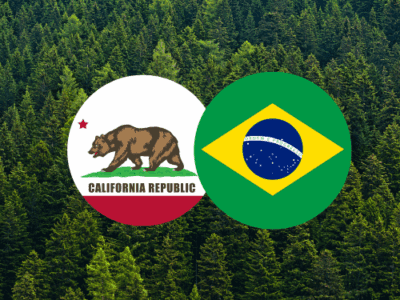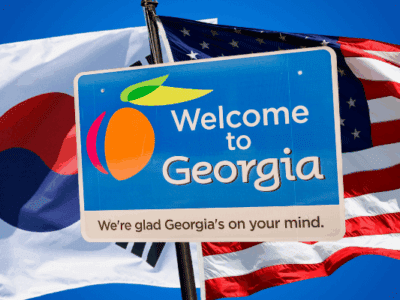Amazon’s New Urban Headquarters Could Flip A Red State To Blue
A city-state rundown on how an influx of Democratic-leaning tech workers could impact swing states like Arizona, Wisconsin and Michigan
UPDATE: Thanks to commenter Bob below who pointed out that the employee numbers from the San Francisco Chronicle that I used to make the calculations below have since been significantly revised downward. As Geekwire reports, the numbers I cited were for Amazon company-wide, not just Seattle. In fact, Amazon employees 40,000 in Washington state, not the 340,000 I cited below. While this changes the single impact of Amazon’s move, my original post was perhaps conservative in underestimating the overall demographic impact, as Amazon’s move will attract other tech companies to the region, plus spouses. So the original point of the article stands, although the impact of Amazon’s move alone will not be as significant as I originally calculated.
Amazon just announced that its seeking a North American city for its second headquarters, beyond Seattle. The move is potentially significant for its impact on the urban form of whatever major city is selected — such as boosting downtown development and transit and helping to revitalize the urban core, as has happened in Seattle. But depending on the city Amazon selects, it could also affect the electoral politics of that state.
The basic question: could the anticipated influx of Democratic-leaning tech workers to a chosen city in a red state be enough to turn that state blue? I ran through some of the reported city contenders and their respective 2016 state vote tallies below. My goal was to find out which city, if chosen, would have the greatest effect on the state’s (and therefore the nation’s) presidential politics, based on 2016 vote tallies.
The bottom line is that Democrats should be rooting for (and Republicans against) an Amazon move to Tucson, Pittsburgh, Detroit, or Milwaukee, which could potentially flip those states from red to blue (or back to blue, with the latter three).
But first: the criteria for Amazon and the potential job numbers. According to the Chicago Tribune:
Whichever city wins Amazon’s “HQ2” will host up to 50,000 workers with salaries that could reach $100,000 annually.
The company said it’s aiming for a metropolitan area of at least 1 million residents, opening up, theoretically, a few dozen cities in the U.S., from New York to Tucson, Ariz., and a handful more in Canada. It’s unclear whether Amazon would consider a bid from a Mexican city.
But the employment — and therefore the voter — numbers could be far bigger than 50,000. As the SF Chronicle reports:
Amazon CEO Jeff Bezos said the company plans to make the second headquarters — dubbed HQ2 — “a full equal” to its Seattle home base [which employs more than 340,000 people].
Any new Amazon home would also bring additional tech workers from other companies that would locate nearby to do business with Amazon. In short, the headquarter decision could result in a major influx of high-skilled workers who could greatly affect the state’s voting results, given that these workers tend to vote Democrat by large margins (as Nate Silver documented in 2012). The key would be for Amazon to locate in a city that could grow just enough relative to the number of Republican-leaning existing voters.
For this exercise, I assumed that the Amazon move would eventually result in 300,000 workers moving in (less than Seattle’s current headquarter count but including potential workers from other tech companies that would co-locate). ** [See “Update” note above.] I also assumed their voting rate would be 80%-20% Democrat vs. Republican, which would roughly track the financial contributions from the tech sector, as a proxy for their voting habits. Of course, some of those workers would already be living and voting in the state, and not all of the workers would be in tech (like any company, Amazon has employees in departments who don’t need tech training, like in human resources and finance, as well as in non-tech support staff positions). But as we’ve seen throughout the country, cities dominated by high-skilled tech industries tend to vote overwhelmingly Democratic.
Given these assumptions, an Amazon move could potentially bring 240,000 new Democratic voters to the chosen state, along with 60,000 new Republican voters. The net gain would be 180,00 new votes for the Democrats.
Could that be enough to turn a state from red to blue?
I should first note that in 2016, Trump beat Clinton by 306 to 232 electoral votes, leaving a gap of 74 electoral votes for Democrats to regain. No single state switch will reverse that gap. But a switch in one sizeable state could alter the presidential calculations going forward. Demography is destiny.
Here are the reported city candidates and their 2016 state presidential election results (I left out the blue state candidate cities, because an Amazon move there would simply improve existing Democratic majorities), along with the potential Amazon bump for Democrats:
FLIPPING TO BLUE
Tucson, Arizona
The state has 11 electoral college votes.
2016 presidential election results:
Trump 1.25M votes
Clinton 1.16M votes
Democrats therefore need approximately 90,000 more votes to flip the state.
Verdict: The 180,000 new Democratic votes from an Amazon move to Tucson would be enough to flip the state to blue, leaving 90,000 extra Democratic votes.
Detroit, Michigan
The state has 16 electoral college votes
2016 presidential election results:
Trump 2.279M votes
Clinton 2.268M votes
Democrats therefore need approximately 11,000 more votes to flip the state
Verdict: The 180,000 new Democratic votes from an Amazon move to Detroit would be more than enough to flip the state to blue, leaving a cushion of 169,000 extra Democratic votes.
Pittsburgh, Pennsylvania
The state has 20 electoral college votes.
2016 presidential election results:
Trump 2.970M votes
Clinton 2.926M votes
Democrats therefore need approximately 45,000 more votes to flip the state
Verdict: The 180,000 new votes from an Amazon move to Pittsburgh (or Philadelphia, for that matter) would be more than enough to flip the state to blue. It would leave a cushion of 135,000 extra Democratic votes.
Milwaukee, Wisconsin
The state has 10 electoral college votes.
2016 presidential election results:
Trump 1.405M votes
Clinton 1.382M votes
Democrats therefore need approximately 23,000 more votes to flip the state
Verdict: The 180,000 new Democratic votes from an Amazon move to Milwaukee would be enough to flip the state back to blue. It would leave a cushion of 157,000 extra Democratic votes.
CUTTING THE REPUBLICAN LEAD
Kansas City, Missouri
The state has 10 electoral college votes.
2016 presidential election results:
Trump 1.594M votes
Clinton 1.071M votes
Democrats therefore need approximately 520,000 more votes to flip the state.
Verdict: The 180,000 new votes from an Amazon move to Kansas City would not be enough to flip the state to blue. It would cut the Republican lead by about one-third though.
Nashville, Tennessee
The state has 11 electoral college votes at stake.
2016 presidential election results:
Trump 1.5M votes
Clinton 870K votes
Democrats therefore need approximately 650,000 more votes to flip the state
Verdict: The 180,000 new votes from an Amazon move to Nashville would not be enough to flip the state, but it could cut the lead for Republicans by about a quarter.
Austin, Texas
The state has 38 electoral college votes.
2016 presidential election results:
Trump 4.685M votes
Clinton 3.878M votes
Democrats therefore need approximately 810,000 more votes to flip the state
Verdict: The 180,000 new votes from an Amazon move to Austin would not be enough to flip the state to blue. It would cut the lead by about one-fifth though.
Bonus Analysis: Boise, Idaho
Note: this city does not fit Amazon’s reported criteria for a move, but the city has the makings of a future tech hub, given the low-cost of living and proximity to a lot of outdoor recreation.
Idaho otherwise has 4 electoral college votes.
2016 presidential election results:
Trump 409K votes
Clinton 190K votes
Democrats therefore need approximately 220,000 more votes to flip the state.
Verdict: The 180,000 new votes from an Amazon move to Boise would not be enough, by just 40,000 extra votes, to flip the state to blue. But it would make a significant difference in Idaho politics.
Bottom line: if Amazon moved to Tucson, Pittsburgh, Detroit, or Milwaukee, it could potentially flip those states to blue in 2020. A Boise move would come close to flipping the state, falling short by 40,000 votes. And a move to Kansas City, Nashville or Austin would chip away at Republican voter leads in those states by the following: one-third in Missouri, one-quarter in Tennessee, and one-fifth in Texas.
So for those who care about politics and not just the employment and potential environmental gains, Amazon’s move could have a significant effect on the 2020 election (not to mention House and Senate races, which would need to be covered in a different post).
Now that’s the kind of prime delivery that would make a lot of Democrats happy.
Reader Comments
5 Replies to “Amazon’s New Urban Headquarters Could Flip A Red State To Blue”
Comments are closed.







Aren’t you forgetting the spouses and significant others of the 240,000 Blue voters? Doesn’t that probably add another 200,000 votes? Or am I missing something?
Sam Bleicher
sambleicher@gmail.com
That’s probably true and is a good point. But it may be harder to figure out spousal voting patterns.
“Amazon CEO Jeff Bezos said the company plans to make the second headquarters — dubbed HQ2 — “a full equal” to its Seattle home base [which employs more than 340,000 people].”
Umm…you doctored the original quote. The article states that they employ 40,000 people at the Seattle HQ. You changed that to 340,000 – a figure that’s way, way, way off. Why write a whole post based on a blatant lie?
“it could potentially flip those states to blue in 2020”
Not really. They’ll have announced the HQ2 location by 2020, but that’s about it. We’re talking at least a decade – if not three – for them to build out to the 50,000 employees. And, again, those 50,000 employees aren’t anywhere near the 300,000 employees you’re claiming.
Bob, you’re calling this a “blatant lie” – but actually the original source article said 340,000 (which is in reality Amazon’s worldwide total # of employees) before it was corrected. Because the Chronicle corrected its figure, I expect Ethan will want to correct also, and revise his quotation (he probably didn’t look back at the article; I sure didn’t until I saw this comment). It’s helpful to see the correction, and thank you for that; but the accusation that he “doctored” the quotation is both uncharitable and incorrect.
As Sean notes, the original article changed their figures. Thanks for pointing this out. I’ve since added an update to the post to reflect the new information.